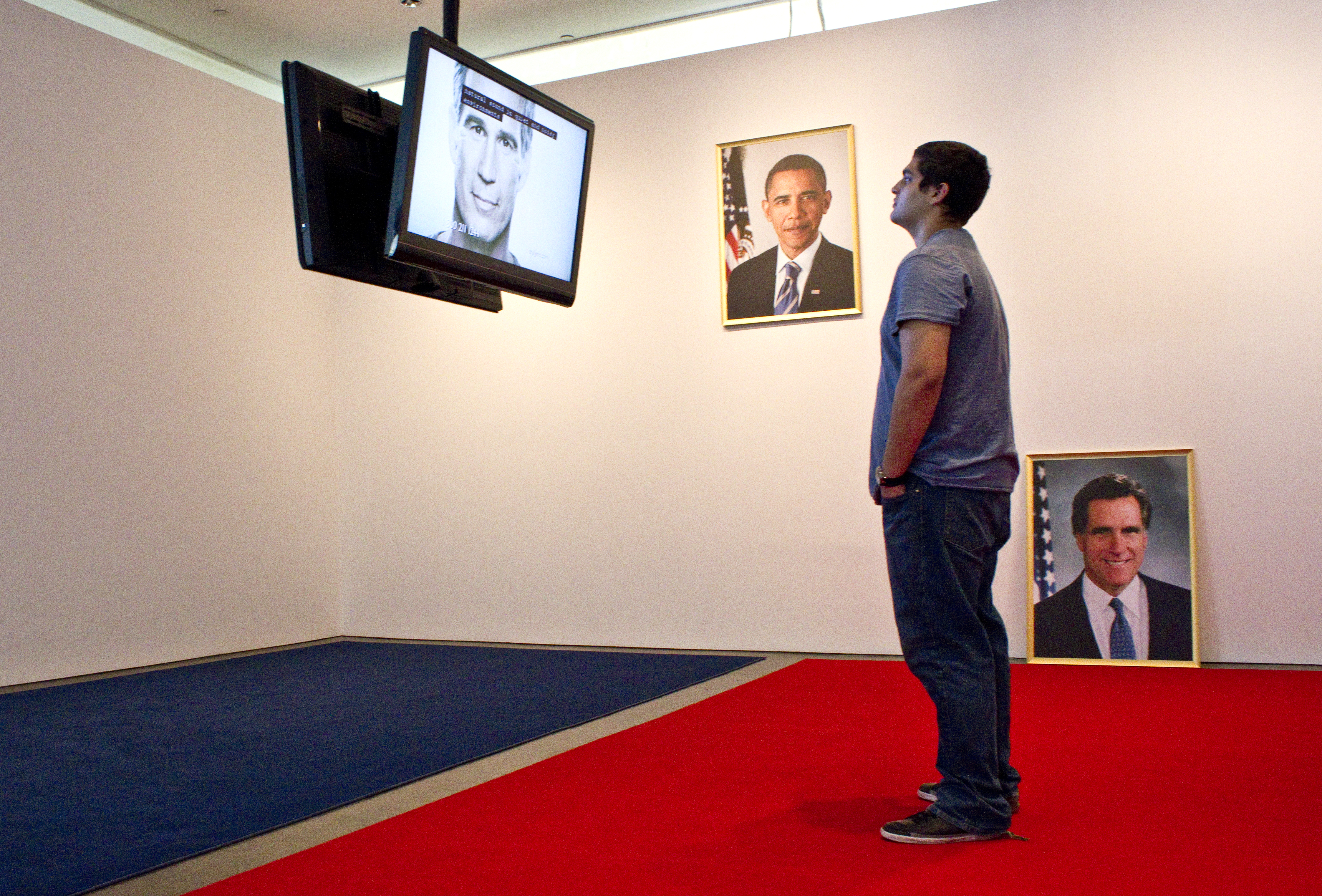With the presidential and congressional elections quickly approaching, many voters are scrambling to inform themselves about the candidates and their policies. But not many would turn to an art exhibit for political information.
Jonathan Horowitz, a New York-based artist, portrays the role of media and its political bias in his exhibit “Your Land/My Land: Election ’12.” The exhibit, showcased in the Hammer Museum lobby, bluntly displays the polarity between political conservatives and liberals in the United States.
“(It is) a topic I felt strongly about and was consumed by. I wanted to respond and participate in the election in some way as an artist. … Our media has become increasingly polarized. … When you see the main cable media outlets back-to-back I think that becomes comically self-evident,” Horowitz said. “We see how the news media works today rather than encouraging the analysis of things.”
The installation is divided into two zones; blue and red carpets divide the small room in half, while two television monitors hang over the middle, back-to-back. The television facing the blue zone broadcasts MSNBC Live, which tends to report with a liberal bias, while the red zone broadcasts Fox News, which leans towards a conservative viewpoint, according to Horowitz.
A portrait of President Barack Obama hangs in the divide, while Senator Mitt Romney’s portrait is propped against the wall in the red.
“I wanted to encourage the viewer to go back and forth and experience and compare both sides,” Horowitz said. “It’s designed as a location for people to get information and exchange information with the hope of engaging more people in the political process.”
The exhibit, which also broadcasts political debates live, makes not only the media bias more obvious, but also encourages the viewer to transcend his or her own political prejudices.
“It was minimal, but it was stark,” said Alexander Lyons, a second-year political science student and policy director for the Bruin Democrats. “When you step into the right or the left side you step into your own echo chamber … That’s sort of how people experience information now, they don’t look outside of their box.”
Lyons said he has noticed that many people don’t search hard enough for information that accurately depicts both sides. Many will choose information based on their own political affiliations.
“Both sides can agree that there is a lot of political polarization. It’s easy to turn on the TV and look at biased media rather than look for unbiased facts on your own,” said William Chakar, a second-year physiological sciences student, and committee whip for the Bruin Republicans.
Chakar said he has noticed political prejudice in his search for information and strives to understand both positions on an issue. He said the election is an important decision now more than ever because the United States is becoming more divided.
Despite the polarization in media, politics and society, the exhibit shows that only one can be chosen to lead the nation.
“The president is one person that is supposed to represent everyone. … The day after the election, the (candidate) goes from representing half the population to representing the whole population,” Horowitz said.
As Horowitz shows in his exhibit, this nation is swathed in red and blue, with no purple in between.
